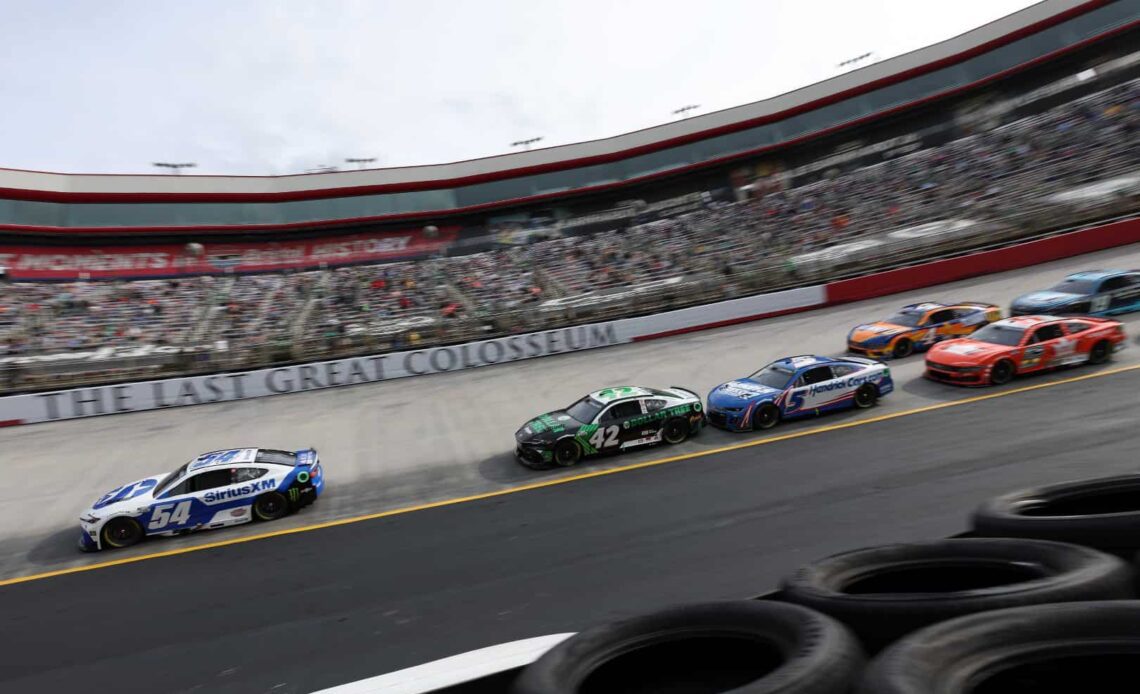Some drivers called it “fun.”
Others (oh, hey, Ryan Blaney) hated it.
But no matter what they had to say about the racing at Bristol Motor Speedway on Sunday (March 17), it was in their hands.
It’s been a while since you could say that about a race: it was in the hands of the drivers and their crews.
It wasn’t about the package.
Not once did the words “clean air” enter into the conversation. There were multiple racing lines. Passing? Plenty. Inside, outside, drivers could not only catch but pass the driver in front of them. There was a record number of lead changes on a short track and just one round of green flag pit stops to play into that number. It was everything race fans have asked for.
You wanted old-school short track racing? You got old-school short track racing on Sunday.
Tire management was the name of the game.
In a perfect world, drivers might have gotten maybe 15 more laps out of a set of tires, but tire strategy should not be that big of a deal. For decades, tire management was the name of the game in NASCAR’s top series. At racetracks across the country every Saturday night, it still is.
Simply put, Denny Hamlin’s team set up his car the best for the tires Goodyear brought, and Hamlin drove it perfectly when it mattered. Martin Truex Jr. was almost as good but burned his tires off trying to catch Hamlin as they worked through traffic in the closing laps, lapping car after car after car until just five remained on the lead lap at the checkers.
Yep, half of the top 10 got lapped.
Old school.
In the “back in the day” that everyone loves to talk about, a handful of cars on the lead lap at the end was the norm. As we saw on Sunday, that didn’t hurt the racing any.
What Sunday was was a race of survival. A lot of race fans don’t remember a time when a driver had to manage everything – his tires, his engine, his transmission – just to finish. When Bristol master Darrell Waltrip won his first race at the infamous bullring, he was the only one left on the lead lap at the end… and 10 of the 29 drivers in the race didn’t finish. Four of them crashed out, and the rest had engine failures, a broken axle, rear end (probably gear) issues.
And it wasn’t just inexperienced or underfunded drivers falling victim. It was Neil Bonnett, Bobby Allison and Richard Petty who didn’t see the checkers that day.
So you wanted old school? You got it.
No, we don’t need…
Click Here to Read the Full Original Article at …

